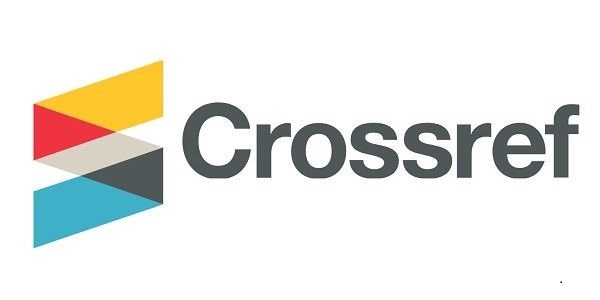Feature Selection Using a Hybrid Approach Depends on Filter and Wrapper Methods for Accurate Breast Cancer Diagnosis
DOI:
https://doi.org/10.56714/bjrs.49.1.5Keywords:
Breast cancer, machine learning, feature selection, voting classifier, cross-validationAbstract
Breast cancer is the biggest cause of mortality in women, outscoring all other malignancies. Diagnosing breast cancer is hard because the disease is complicated, treatment methods change, and there are many different kinds of patients. Information technology and artificial intelligence contribute to improve diagnostic procedures, which are critical for care and treatment as well as reducing and controlling cancer recurrence. The primary part of this research is to develop a new feature selection strategy based on a hybrid approach that combines two methods for selecting features: the filter and the wrapper. In two stages, this method reduces the number of features from 30 to 15 to increase and improve classification accuracy. The suggested method was tested using the Wisconsin Breast Cancer Dataset dataset (WDBC). To enhance the classification of breast cancer tumors, a soft voting classifier was used in this study. The proposed methodology outperforms previous research, achieving 1 for the F1 score, 1 for AUC, 1 for recall, 1 for precision, and 100% for accuracy. Furthermore, 10-fold cross-validation has a 98.2% accuracy rate.
Downloads
References
World Health Orgnaization | WHO, World Breast Cancer Rep (2020).
A. Haleem, M. Javaid, I.H. Khan, Current Medicine Research and Practice 9(6), 231 (2019).
H. Asri, H. Mousannif, H. Al Moatassime, T. Noel, Procedia Comput. Sci. 83, 1064 (2016).
S. Guo, Y. Liu, R. Chen, X. Sun, X. Wang, Neural Process. Lett. 50(2), 1503 ( 2019).
H. Dhahri, E. Al Maghayreh, A. Mahmood, W. Elkilani, M. F. Nagi, J. Healthc. Eng. 2019, 11 (2019).
M. H. Memon, J. P. Li, A. U. Haq, M. H. Memon, W. Zhou, Wirel. Commun. Mob. Comput. 2019, 19 (2019).
A.U. HAQ, J.P. LI, A. SABOOR, J. KHAN, S. WALI, S. AHMAD, A. ALI, G.A. KHAN, W. ZHOU, IEEE Access 9, 99 (2021).
A. Sharma, P.K. Mishra, International Journal of Information Technology, 1 (2021).
Z. Huang, D. Chen, , IEEE Access 10, 3284 ( 2022).
S. Ibrahim, S. Nazir, J. Imaging 7(11), 225 (2021).
M. F. Mardiansyah, R. Pratama, M. F. Al Hakim, B. Rawat, J. Soft Comput. Explor 3(2), 105 (2022).
R. Saidi, W. Bouaguel, N. Essoussi, Mach. Learn. Paradig. theory Appl. Springer, Cham 7, 3 (2019).
L. Batina, B. Gierlichs, E. Prouff, M. Rivain, F. X. Standaert, N. Veyrat-Charvillon, J. Cryptol. 24(2), 269 ( 2011).
K. Pavya, D. B. Srinivasan, Int. J. Sci. Dev. Res. 2(6), 594 ( 2017).
M. Awad, R. Khanna, "Support Vector Machines for Classification,", 1st ed. , ch.3, 39 (2015).
M. A. Naji, S. El Filali, K. Aarika, E. H. Benlahmar, R. A. Abdelouhahid, O. Debauche, Procedia Comput. Sci. 191, 487 )2021(.
M. F. Ak, Healthcare, 8(2), 111 (2020).
M. A. Khan, M. A. K. Khattk, S. Latif, A.A. Shah, M.U. Rehman, W. Boulila, M. Driss, J. Ahmad, " Voting Classifier-Based Intrusion Detection for IoT Networks,", vol 1399. Springer , 313 (2021).
A. Rasool, C. Bunterngchit, L. Tiejian, R. Islam, Q. Qu, Int. J. Environ. Res. Public Health 19(6), 3211 (2022).
D. W. H. Wolberg, M.L Repository., (1995).
K. T. Id, P. Armitage, S. Tesfaye, D. Selvarajah, D. Wilkinson, PLoS One 15(12), e0243907 (2020).
K. Potdar, Int. J. Comput. Appl. 175(4), 7 (2017).
Q. Al-tashi, S. J. Abdulkadir, and S. Member, IEEE Access 8, 125076 (2020).
J. Sevilla, IEEE Trans. Nucl. Sci. 44(3), 1464 (1997).
P. Ferreira, D. C. Le, N. Zincir-heywood, 2019 15th Int. Conf. Netw. Serv. Manag. (CNSM). IEEE, Halifax, NS, Canada,1 (2019).

Downloads
Published
Issue
Section
License
Copyright (c) 2023 Mohammed S. Hashim, Ali A. Yassin

This work is licensed under a Creative Commons Attribution 4.0 International License.







